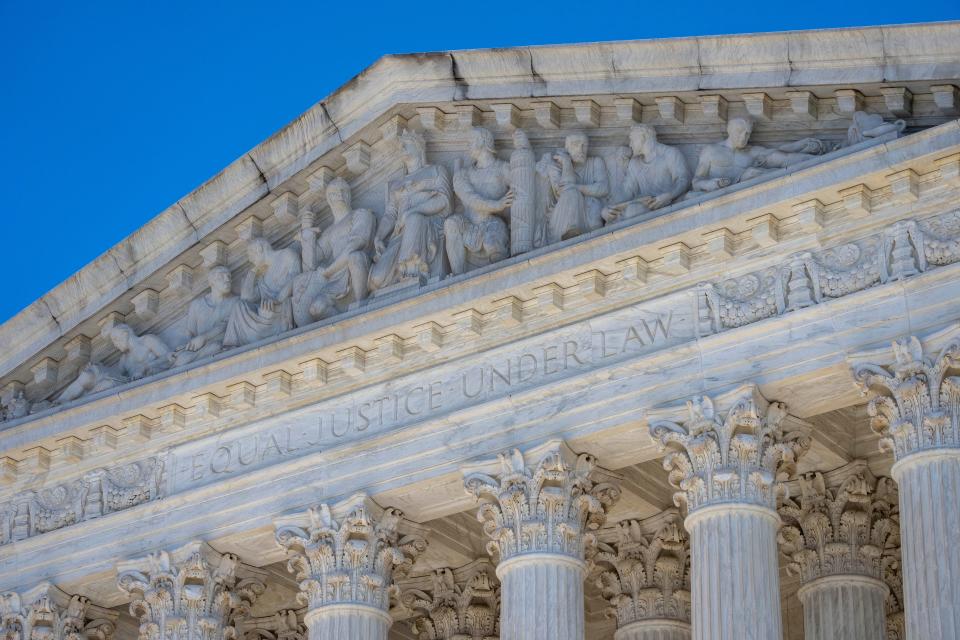'Significant repercussions.' Supreme Court limits government power to curb water pollution

WASHINGTON – The Supreme Court on Thursday sided with a couple who have been battling the Environmental Protection Agency for more than a decade over a plan to develop a property in the Idaho panhandle, a decision with potentially sweeping national ramifications for water quality, agriculture and development.
The case, which was centered on the scope of the 1972 Clean Water Act, was arguably the most important environmental decision the Supreme Court has handed down since a majority last year invalidated an EPA effort to regulate power plant emissions. The plaintiffs asked the court to provide a clearer definition for what the law meant when it gave the agency power to regulate the "waters of the United States."
In an opinion written by Justice Samuel Alito and joined by four other conservative justices, the court limited the scope of the EPA's ability to control wetland pollution. That's important because, in addition to the wetlands themselves, the water at issue often feeds into the rivers and lakes that are more clearly covered by federal pollution controls.
President Joe Biden predicted the decision would "take our country backwards." Several congressional Republicans praised the ruling, including Sen. Marco Rubio of Florida, who described it as "an important check on executive overreach."
What did the Supreme Court rule in the EPA case?
Majority: A majority of the court said that the lack of clarity about what types of waters are covered by the Clean Water Act was difficult for property owners to understand.
What Alito wrote: A "staggering array of landowners," Alito wrote, "are at risk of criminal prosecution" if they don't realize their property is subject to federal environmental rules. Alito's opinion was joined by Chief Justice John Roberts and Justices Clarence Thomas, Neil Gorsuch and Amy Coney Barrett ? all Republican appointees.
Kavanaugh warns of repercussions: Justice Brett Kavanaugh, joined by three liberal justices, said that while he sided with the plaintiffs and against the EPA, he disagreed with the court's definition of what types of waters should be subject to government regulation. The court's ruling, Kavanaugh warned, would have "significant repercussions for water quality and flood control throughout the United States." Kavanaugh, a Republican appointee, was joined by Justices Sonia Sotomayor, Elena Kagan and Ketanji Brown Jackson, all Democratic appointees.
Bottom line: The court's opinion adopts a new, more narrow standard that will limit how much water the EPA may regulate. That's a win for developers and a loss for environmentalists.
Air: Supreme Court rules against EPA effort to regulate power plant emissions
Water: Supreme Court kicks off a new term with controversial cases
How did the EPA case arrive at the Supreme Court?
Michael and Chantell Sackett purchased a vacant lot in a residential subdivision in Idaho in 2004. The couple obtained the county permits needed to develop the site but were informed by the EPA shortly after they began construction that the agency viewed the land as subject to its review because it contained wetlands about 300 feet from Priest Lake.
During oral arguments in October, several members of the court's conservative majority questioned the standard the EPA uses to determine if a wetland is subject to federal permitting requirements and oversight. Chief Justice John Roberts summed up the challenge facing the court by noting that water often flows underground in ways that are difficult to predict or measure: "Water goes everywhere, eventually."

The Sacketts' suit was on its second ride at the Supreme Court. In 2012, a unanimous court held that the couple could file their lawsuit even though the EPA asserted it had not taken a final action in the dispute. As the litigation wound its way through lower courts again, the San Francisco-based U.S. Court of Appeals for 9th Circuit sided with the EPA and upheld the agency's order against the Sacketts.
What is the potential impact of the EPA decision?
In its decision Thursday, the Supreme Court not only overturned the 9th Circuit, it a set a new standard for what types of water is covered by the Clean Water Act.
The court's opinion means that the EPA will have the ability to regulate only wetlands with a "continuous surface connection" to a larger body of water in a way that makes them "indistinguishable" from those large bodies. That's a departure from a more encompassing standard that required the EPA and landowners to consider the chemical and biological connection between the wetland and the larger body of water.
The case has been closely watched by environmentalists, developers and farming groups who have long fought over how far the EPA's reach extends beyond navigable lakes and rivers and smaller streams and wetlands that feed into ? and pollute ? those larger bodies of water.
What are they saying about the Supreme Court's wetlands decision?
Environmental groups and Democrats, including Biden, slammed the decision.
"The Sackett decision undoes a half-century of progress generated by the Clean Water Act," said Sam Sankar, vice president of programs at Earthjustice. "Almost 90 million acres of formerly protected wetlands now face an existential threat from polluters and developers."
But those supporting the Sacketts said the decision would make it easier for property owners to know where they stand with the EPA.
Sen. John Barrasso of Wyoming, the top Republican on the Senate Energy and Natural Resources Committee, described the decision as a "big win in our fight to stop federal overreach and protect Americans’ private property rights."
This article originally appeared on USA TODAY: Clean Water Act: Supreme Court rules against EPA in years-old dispute